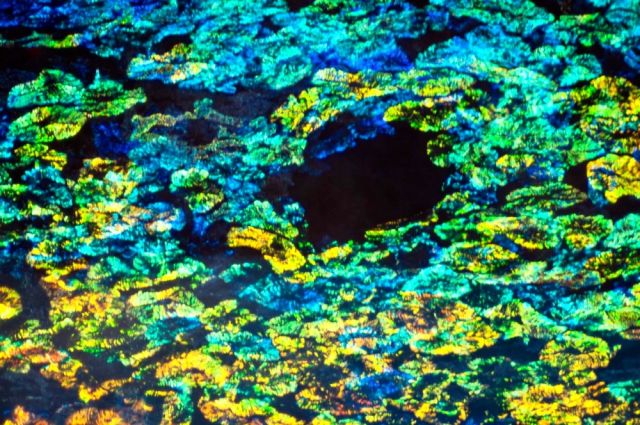The Morse Lab Fine Tunes Iridescence in ICB-Supported Research

New research conducted in the UCSB lab of Daniel Morse, professor emeritus in the Department of Molecular, Cellular and Developmental Biology (MCDB), demonstrates that the squid’s ability to “tune” its colors is correlated with the presence of specific sequences of reflectins, proteins unique to the light-sensing tissue of cephalopods. The findings appear in the Journal of Biological Chemistry.
While the diverse optical behaviors of cephalopod tissues have been attributed to reflectins for almost a decade, this work shows for the first time how reflectin protein subtype structure, localization, distribution and relative abundance correlate with the squid’s optical output. Building on the lab’s previous work, the new research details the mechanisms of the animal’s tunable (adaptive) and nontunable (static) iridocytes. Specialized cells in squid skin, iridocytes—also known as iridophores—produce color via Bragg reflection, by which light is reflected in a very regular and predictable manner.
“The discovery reported in this paper reveals the subtlety and power of the reflectin proteins to fine-tune the colors of living cells with a beauty that reminds us of paintings by Monet,” said Morse, who is a co-author on the paper.
The newly published research characterizes the mechanistic action of iridocytes by characterizing their reflectin proteins. “Our new work into the cellular mechanisms of squid iridescence allows us to refine experiment design for reflectin-based adaptive photonic structures,” said lead author Daniel DeMartini. “In the future, this could be very useful for creating synthetic optical materials that—like squid skin—can be tuned.”
Structures, Organization and Function of Reflectin Proteins in Dynamically Tunable Reflective Cells.
